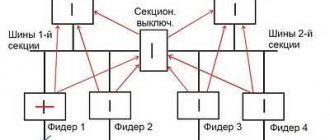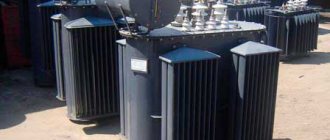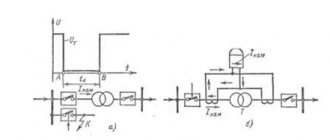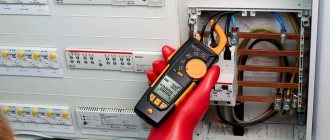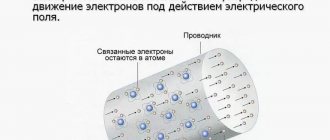The interaction of the electromagnetic field with conductors forms eddy currents. This phenomenon can perform beneficial and harmful functions. In certain situations, energy is wasted or degrades the performance of transformers and power lines. However, the correct application of the basic principles of this effect makes it possible to non-contactly study the composition of materials and solve other practical problems.
In induction hobs, Foucault currents heat cookware with economical energy consumption
Discovery of eddy currents
According to historical data, this phenomenon was first discovered at the beginning of the 19th century by the French researcher D. Arago. Specialists know his clear experience. Rotation of the magnetized pointer sets in motion a thin copper disk located a short distance above. The nature of the phenomenon was revealed by M. Faraday, who explained the presented simple example of movement by the interaction of the field and the currents formed in the conductor. They received a specific name after the name of the scientist. Foucault discovered the heating of bodies with a sufficiently strong energy potential of an alternating current source.
Application
Eddy currents have found application in electromagnetic induction. They are used to brake rotating massive parts. Thanks to magnetic induction braking, they are also used to calm the moving parts of electrical measuring instruments, in particular to create a counteracting torque and slow down the moving part of electric meters.
They are also used in a magnetic brake disc on an electric meter. In some cases they are used in technological operations that are impossible without the use of high frequencies. For example, when pumping air from vacuum devices and gas cylinders. In addition, they are needed to completely degas the fittings in a high-frequency generator.
Application in conductors
The nature of eddy currents
Electric field - what is it, concept in physics
The formation of EMF in conductors under the influence of a changing magnetic flux is called induction. Electric motors, generators, filter coils and oscillatory circuits operate on the principles of this phenomenon.
What are Foucault currents, shown in the figure
At a certain location of the alternating field source and conductor, the effects noted above must be taken into account. If necessary, a specific voltage can be measured at test points. Important Features:
- taking into account the uneven distribution of electrical conductivity, it is difficult to accurately determine the trajectory of currents;
- they will occur when the plate moves relative to the permanent magnet;
- the lines form closed contours in the thickness of the sample;
- they are located perpendicular to the magnetic flux vector.
The essence of the phenomenon
Eddy or Foucauldian currents are those that flow due to the influence of an alternating magnetic field. In this case, it is not the field itself that changes, but the conductive position of this field. That is, if a conductive movement of a static field occurs, then energy will still be generated in it.
Toki Fuko
Foucaults arise where an alternating magnetic field changes and in fact they are no different from energy flowing through wires or secondary electrical transformer windings.
Definition from the textbook
Practical applications of eddy currents
Stray currents
The passage of a strong current increases the energy potential of the molecular lattice, which is accompanied by heating. This phenomenon explains the possibility of using appropriate technology to non-contactly increase the temperature of conductive materials. If we give an example with an induction hob, we can highlight the following advantages:
- the formation of heat deep in the bottom of the pan ensures effective heating of the working area;
- the temperature on the panel surface does not increase excessively;
- The thermal effect on products is carried out faster compared to analogues (spiral heating elements, gas stoves).
It is not difficult to give an example based on experience with disk rotation. The same principle is implemented in the design of an electromechanical energy meter. In this case, the rotation of the working unit is ensured by induced currents. Acceleration/deceleration corresponds to the change in power in the load.
By increasing the current, it is possible to heat metals (alloys) to the melting point
When carefully studying thematic issues, you can find certain disadvantages. Electromagnetic flux in a solid transformer core can increase energy losses. For this reason, the corresponding parts are created from a set of plates coated with a layer of dielectric. These elements are connected by an insulated rod.
History of discovery
In 1824, scientist D.F. Arago conducted an experiment. He mounted a copper disk on one axis and placed a magnetic needle above it. When the magnetic needle rotated, the disk began to move. This is how the phenomenon of eddy currents was observed for the first time. The disk began to rotate due to the fact that, due to the flow of currents, a magnetic field appeared, which interacted with the arrow. This was then called the Arago phenomenon.
A couple of years later, M. Faraday, who discovered the law of electromagnetic induction, explained this phenomenon in this way: a moving magnetic field induces a current in the disk (as in a closed circuit) and it interacts with the field of the arrow.
Why is the second name Foucault's currents?
Because the physicist Foucault studied the phenomenon of eddy currents in detail. During his research, he made a great discovery. It consisted in the fact that bodies heat up under the influence of eddy currents. We've sorted out the theory, now we'll talk about where Foucault currents are used and which ones cause problems.
The video below provides a more detailed definition of this phenomenon:
Eddy current principles
For a detailed study of the processes, you can consider the effect of fields when connecting a typical induction coil to a source. Alternating current in a conductor forms field lines. Tension creates a potential difference in adjacent loops. The movement of electrons forms eddy currents. They move along trajectories of least resistance, which changes if the products contain impurities, cracks, cavities and other defects.
Ohm's law
Eddy currents are the directed movement of electrons in a conductor. Therefore, the phenomena under consideration can well be described by basic physical formulas and definitions.
The current strength is calculated according to Ohm's law:
I = (-1/R) * (dФ/dt), where:
- R – electrical resistance;
- Ф – magnetic flux;
- dt – time interval.
It is clear that for practical calculations the most difficult thing is to find out the value of conductivity. In addition to the above-mentioned unevenness in the path of current flow (differences in the conductor), the trajectory changes under the influence of an alternating field.
Inductance
It is necessary to emphasize the permeability of the conductor by the electromagnetic field lines. Such an effect, with an increase in the power source current, intensifies the vortex effects in the control sample installed at a short distance. The amplitude of the induced currents and the phase are determined by the load and conductivity of the induction coil. As in the previous example, breaks and other defects in the conductive section have a significant impact on the electrical performance of the structure.
Magnetic fields
The dependence on the material parameters is shown in the figure. The numbers indicate:
- steam or diamagnetic materials;
- ferrites;
- iron.
How currents will arise in different samples under equal general conditions
Interesting. The magnetic fields created by the coil and vortex processes have a mutual influence.
Flaw detection
The considered disadvantages can be converted into advantages. Changes in eddy currents determine the presence of defects when scanning control samples. When creating measuring instruments, the following factors are taken into account:
- conductivity determines the strength and path of currents;
- Smooth surfaces are easier to explore;
- vortex processes are activated when the working area decreases.
Detecting a contour with a flaw detector
Taking into account the intended purpose, the design and placement of the sensors are adjusted. As a rule, the coil is installed closer to the measurement location. The shape of the product is adjusted to better suit the object being examined.
Reduction of eddy currents
To successfully combat the negative manifestations of vortex effects in the electric power industry and other areas, they use the noted features. In particular, the resistance of conductors is increased by adding silicon and other additives. Sets of plates are placed parallel to the magnetic flux vector. Provide reliable insulation of structural elements.
How to determine in a transformer
Finding out where the eddy currents are located in a transformer is not difficult. As a rule, they are located in transformer cores. When they close in the cores, they heat them and create energy. Since they appear in planes that are perpendicular to the magnetic flux according to the characteristic, a transformer reduction of the cores occurs.
Note! Insulated steel plates are used to measure them.
You might be interested in How to calculate reactive and active power
Definition in transformer
Application in practice
Now about the useful areas of application of Foucault currents. A huge contribution was made to metallurgy with the invention of induction steelmaking furnaces. They are designed in such a way that a molten mass of metal is placed inside a coil through which a high-frequency current flows. Its magnetic field induces large currents within the metal until it completely melts.
Author's note!
The development of induction furnaces has significantly improved the environmental friendliness of metal production and changed the understanding of smelting methods. I work at a metallurgical plant, where ten years ago they launched a new high-tech workshop with such installations, and a few years after the development of the new equipment, the classic open-hearth furnace was closed. This indicates the productivity of this method of heating metals. Eddy currents are also used to surface harden metal.
Visual application in practice:
In addition to metallurgy, they are used in the production of electric vacuum devices. The problem is the complete removal of gases before sealing the flask. Using Foucault currents, the electrodes of the lamp are heated to high temperatures, thus deactivating the gas.
In everyday life, you can come across kitchen induction stoves on which food is prepared, thanks to the use of this phenomenon. As you can see, eddy currents have their pros and cons.
Foucault's currents are both beneficial and harmful. In some cases, their influence entails non-electrical problems. For example, a pipeline laid near cable lines rots faster without any apparent third-party reasons. At the same time, induction heating devices have shown themselves to be quite good, especially since you can assemble such a device for household use yourself. We hope you now know what Foucault eddy currents are, as well as what applications they have found in production and in everyday life.
Forces of vortex flows
To increase the efficiency of any mechanism, it is necessary to minimize the forces of vortex flows. To do this, increase the electrical resistance of the magnetic wire. The method for reducing the effects of eddy currents depends on the type of electrical device. Suppression of Foucault currents is carried out in the following ways:
- When assembling transformers, the cores are assembled from thin insulated plates. This allows you to reduce the degree of heating from the effects of Foucault current.
- The metal plates are positioned so that the direction of the eddy current is perpendicular to their boundaries.
- With the advent of ferrites, which have high resistance, it became possible to produce solid cores.
Also, during the casting of core elements, silicon is added, which increases the electrical resistance. Sometimes pieces of metal wire are used during assembly, which are previously subjected to heat treatment.
In addition, special gaskets are used for insulation. Such assembly methods make it possible to significantly reduce the strength of Foucault currents, as a result of which the efficiency of any unit increases.
Magnetic wires in high-frequency equipment are carefully insulated from each other and twisted into a bundle. Each twist is covered with a special insulating element. To transmit electrical energy over long distances, a multicore cable with insulated wires is used.
Stray currents: cause and protection against them
What is stray current?
Metal products used in electrical applications quickly wear out and lose their high technical characteristics due to such a phenomenon as stray currents.
What is “stray current”
? This phenomenon is one of the types of movement of charges in a certain direction. Charged particles appear in the ground, which in a particular situation is a conductor. Stray currents lead to the destruction of metal products that are located underground or in slight contact with it. It is in interaction with the soil that danger lurks. In order to understand the nature of this phenomenon, it is necessary to carefully understand the reasons for its occurrence, as well as the characteristics and methods of protection against it.
Stray currents: the cause of occurrence
Every day and even hourly people in the modern world are surrounded by various electrical devices. Consequently, the volumes of electricity consumed are inexorably growing, which leads to the need to build a larger number of complete transformer substations (complete transformer substations) and distribution installations, as well as to install more and more new power lines, electrical networks for trains, subway contact rails, etc. It is known that the earth is not electrically conductive, and all of the above objects of electricity are, in one way or another, interconnected with it, and this connection is very specific.
The basis for the appearance of electric current is the potential difference at two points of an electrical conductor. Stray currents arise according to a similar principle, the difference is that the conductor in this situation is the soil. Electrical systems in which an isolated neutral is present are characterized by the fact that the potential difference is provided by grounding loops. When connecting the neutral conductor to this circuit, a voltage drop may occur due to its own resistance, which appears during the passage of charge. This conductor is designated PEN, which indicates a combined neutral protective and neutral working conductor. The base of this combined conductor and the ground loop of the transformer substation are connected to each other. The PEN conductor is also connected to the building grounding device. Thus, two grounding devices, namely the transformer substation charger and the facility charger, are the basis for the occurrence of a potential difference, from where stray currents appear.
In the situation of damaged power lines, an almost similar situation occurs. That is, the earth is the carrier of the potential difference in the event of a short circuit. As a rule, the lion's share of such damage is eliminated using automation. It is important that elimination in this way is only possible in case of large-scale leaks. Neutralizing this problem at small values is more problematic.
Small stray currents appear precisely because of the abundance of electric vehicles. For example, a trolleybus is connected to the electrical network using special structures called “rods”. They are connected to neutral and phase conductors and, as you know, are located on the trolleybus itself. That is why this vehicle is characterized by the inability to produce large stray currents.
The power supply for trains is different from the trolleybus example above. In this case, the neutral conductor is connected to the rails, and the phase conductor, in turn, is located above the tracks. Special current collectors (pantographs) supply electrical energy to the engine of a given vehicle. The pantograph is located on the roof of an electric locomotive, electric train or tram and has direct contact with the power cable. Traction substations are the basis for the power supply of this type of electrical network. The distance between substations is the same and unchanged. Stray currents appear due to the curvature of the routes. In this case, charged particles follow the path with the least resistance. That is, when the opportunity arises to “cut the corner,” the charge will pass not through the rails, but along the ground.
Stray current: effect on metal
Under the ground there is a huge number of different objects and metal products: pipelines, cable lines, reinforced concrete, etc. It is known that metal is a good conductor of electric current, therefore, the charge in this situation will not pass through the soil, but through the metal present in it. The zone through which the electric current enters the soil is called the “cathode zone”, and through which it exits the “anodic zone”.
Regarding the water supply, it is worth talking in more detail. It is known that the process of corrosion in them is inevitable, and groundwater is characterized by a high content of soluble microelements and serves as an excellent conductor of electricity. Thus, corrosion processes occur in metal pipes underground due to the electrolysis process. Corrosion is very well expressed in the anodic zone, and in the cathodic zone the destruction is less pronounced.
To summarize, it is worth noting that stray currents have a destructive effect on metal products, causing serious economic losses.
How to avoid the harmful effects of stray current?
Stray currents are eliminated in a way called cathodic protection. In order to combat this phenomenon with a minimum of obstacles, it is necessary to neutralize the likelihood of the occurrence of an anodic zone at the protected site.
Cathodic protection produces a constant electric current and at the same time connects to metal objects with a pole with a negative value. The positive pole joins the anodes (“sacrificial anodes”), which take the lion’s share of the destructive influence on themselves. In addition, protected objects are covered with special anti-corrosion coatings.
Disadvantages of cathodic protection:
- the probability of “overprotection”, in which the protection potential increases beyond the norm and corrosion processes begin;
- incorrect calculations of protection, which cause acceleration of corrosion processes of nearby metal.
How to measure stray current?
Before the pipeline is installed underground, stray currents are calculated by measuring the potential difference discussed above. Measurements are taken every 1000 meters.
The measuring instruments used must have an accuracy level of at least 1.5, and the minimum intrinsic resistance is 1 MOhm. The maximum potential difference is 10 mV. The duration of one measurement must be at least 10 minutes, and recording must be carried out every 10 seconds.
It is worth noting that measurements in the area of operation of electric transport must be carried out during peak load periods. A potential difference exceeding 0.04 V indicates that stray currents are present.
Measuring instruments can be reference electrodes
, namely: copper-sulfate transfer type and copper-sulfate connecting type.
In addition, you need a digital multimeter
and
a flexible wire
with good insulation with a length of at least 100 m.
Stray currents are fraught with danger even at the most insignificant levels and imply the destructive effects of underground and other communications. To avoid such situations, it is necessary to carry out preventive measures to identify and subsequently eliminate this phenomenon.
What are eddy currents and what measures are taken to reduce them?
What are eddy currents and why are they also called Foucault currents? The causes of this phenomenon and methods of application.
There are a number of phenomena in electricity that specialists need to know. Although not all the information may be useful in everyday practice, sometimes it will help to understand the cause of a problem. Eddy currents were the reason for the development of some technological tricks in the manufacture of electrical machines and even became the basis for the operating principle of some inventions. Let's figure out what Foucault eddy currents are and how they arise. Content:
- Brief Definition
- History of discovery
- Damage from eddy currents
- How to reduce losses
- Application in practice
During magnetization reversal of magnetic materials by an alternating magnetic field, part of the energy of the magnetic field involved in the magnetization reversal process is lost. Per unit mass of a certain magnetic material, a certain part of the power is dissipated in the form of heat, which is called “specific magnetic losses”.
Specific magnetic losses include dynamic losses, as well as hysteresis losses. Dynamic losses include losses caused by eddy currents (induced in the material) and magnetic viscosity (the so-called magnetic aftereffect). Losses due to magnetic hysteresis are explained by irreversible displacements of domain boundaries.
Each magnetic material has its own value of hysteresis losses, proportional to the frequency of the magnetizing reversal magnetic field, as well as the area of the hysteresis loop of this material.
Hysteresis loop:
To find the power losses associated with hysteresis per unit mass (in W/kg), the following formula is used:
To reduce hysteresis losses, they most often resort to the use of magnetic materials whose coercivity is low, that is, materials with a thin hysteresis loop. Such material is annealed to relieve stress in the internal structure, reduce the number of dislocations and other defects, and also enlarge the grain.
Eddy currents also cause irreversible losses. They are due to the fact that a magnetizing reversal magnetic field induces a current inside the material being magnetized. Losses caused by eddy currents, accordingly, depend on the electrical resistance of the material being magnetized and on the configuration of the magnetic circuit.
Thus, the greater the resistivity (the worse the conductivity) of the magnetic material, the smaller the losses caused by eddy currents will be.
Eddy current losses are proportional to the frequency of the magnetizing reversal magnetic field squared, therefore, in devices operating at sufficiently high frequencies, magnetic cores made of materials with high electrical conductivity are not applicable.
You can estimate the power of losses due to eddy currents per unit mass of magnetic material (in W/kg) using the formula:
Since the quantitative eddy current losses depend on the square of the frequency, to work in the high frequency range it is necessary first of all to take into account the eddy current losses.
To minimize these losses, they try to use magnetic cores with higher electrical resistance.
To increase the resistance, the cores are assembled from many mutually insulated sheets of ferromagnetic material with a sufficiently high intrinsic electrical resistivity.
Powdered magnetic material is pressed with a dielectric so that the particles of the magnetic material are separated from each other by the dielectric particles. This is how magnetodielectrics are obtained.
Another option is the use of ferrites - special ferrimagnetic ceramics characterized by high electrical resistivity, close to the resistance of dielectrics and semiconductors. In fact, ferrites are solid solutions of iron oxide with oxides of some divalent metals, which can be described by the general formula:
As the thickness of the sheet of metal material decreases, the losses caused by eddy currents decrease accordingly. But at the same time, losses associated with hysteresis increase, because as the sheet becomes thinner, the grain size also decreases, which means the coercive force increases.
Practically, with increasing frequency, losses due to eddy currents increase more than losses due to hysteresis; this can be seen by comparing the first two formulas. And at a certain frequency, losses due to eddy currents begin to increasingly dominate over losses due to hysteresis.
This means that although the thickness of the sheet depends on the operating frequency, nevertheless, for each frequency a certain sheet thickness must be selected, with which magnetic losses as a whole will be minimized.
Typically, magnetic materials are characterized by a delay in the change in their own magnetic induction depending on the duration of action of the magnetizing reversal field.
This phenomenon causes losses associated with magnetic aftereffects (or so-called magnetic viscosity). This is due to the inertia of the domain magnetization reversal process. The shorter the duration of the applied magnetic field, the longer the delay, and therefore the greater the magnetic losses caused by “magnetic viscosity”. This factor must be taken into account when designing pulsed devices with magnetic cores.
Power losses from magnetic aftereffects cannot be calculated directly, but they can be found indirectly - as the difference between the total specific magnetic losses and the sum of losses due to eddy currents and magnetic hysteresis:
So, during the process of magnetization reversal, there is a slight lag in the magnetic induction from the strength of the magnetizing reversal magnetic field in phase. The reason for this is again eddy currents, which, according to Lenz’s law, prevent changes in magnetic induction, hysteresis phenomena and magnetic aftereffects.
The phase delay angle is called the magnetic loss angle δm. The characteristics of the dynamic properties of magnetic materials indicate such a parameter as the magnetic loss tangent tgδm.
Here is the equivalent circuit and phasor diagram for a toroidal coil with a core of magnetic material, where r1 is the equivalent resistance of all magnetic losses:
It can be seen that the magnetic loss tangent is inversely proportional to the quality factor of the coil. The induction Bm arising under these conditions in the material being magnetized can be decomposed into two components: the first is in phase with the strength of the magnetizing field, the second is 90 degrees behind it.
The first component is directly related to reversible processes during magnetization reversal, the second - to irreversible ones. Magnetic materials used in alternating current circuits are characterized in this regard by such a parameter as complex magnetic permeability:
Earlier, ElektroVesti wrote that two teams of American physicists have developed a strategy for producing devices for converting light into electricity using organic semiconductors and “liberated” electrons.
Based on materials from: electrik.info.
Application of Foucault currents
Experts believe that when using Foucault currents, they have more harmful effects than positive ones. But still they have found wide application in various areas of life. This especially applies to the following areas:
- metallurgical industry;
- transport;
- computer technology;
- electrical engineering.
Based on eddy currents, units for metallurgy are produced that allow the transportation and hardening of molten metals. Induction furnaces are widely used in this industry. In terms of their performance, they are much superior to similar devices, the operation of which is based on other types of action.
In addition, the processes of melting and hardening of metals are possible only using this phenomenon . In transport, when moving high-speed trains on magnetic levitations, braking systems are used, the operating principle of which is based on Foucault currents.
The creation of modern computer technology and transformers became possible only thanks to the use and improvement of vortex flows in their designs. They are also used in vacuum devices, where air and other gases are completely pumped out.
Such devices are characterized by high efficiency and productivity. Currently, physicists in many countries continue to study and experiment with this phenomenon. As a result, it is possible every year to improve devices and equipment operating on the principle of eddy currents.
